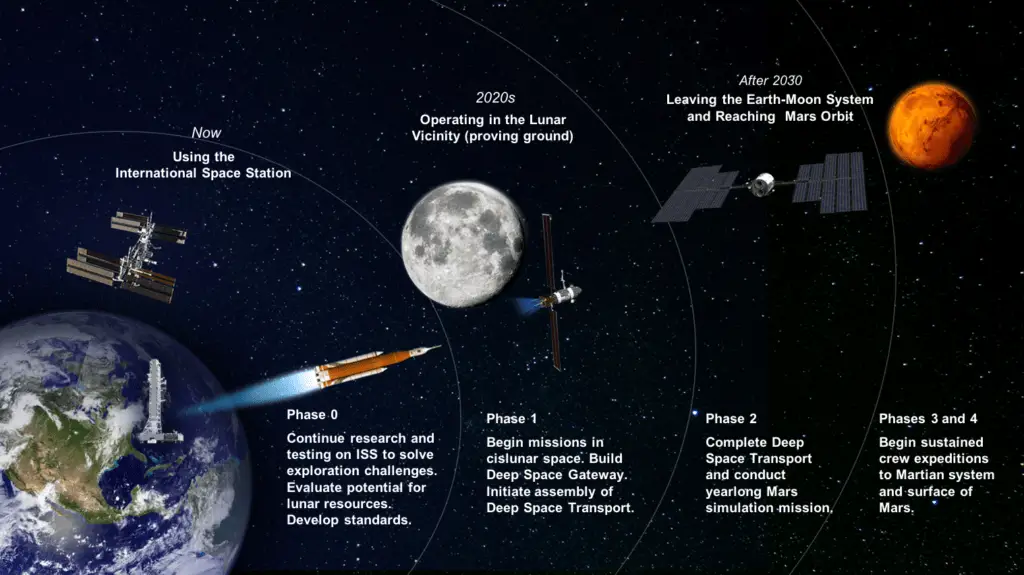A Space Faring Civilization. Doesn’t that sound majestic. We have been hearing the term more often this past decade, but it doesn’t change the fact that humanity still has not ventured past the dark side of the moon. With that said, what do we actually need to explore our own solar system, and maybe one day the entire universe?
Despite how sci-fi a deep-space journey might sound, NASA has taken a rather systematic approach as the leading organization for aeronautics and space research. They are focused on four areas of development, including deep space engine technology; entry, descent, and landing technology; space radiation protection; and mission environment integration.
Let’s take a look at what these developments might involve.
How far away is deep space?
Before getting into it all, it’s important to understand what defines a deep-space trip in order to know how we can properly equip ourselves for the journey.
Deep Space Exploration is in simpler terms the exploration of the distant regions of outer space. But unfortunately, there has been no general consensus on where this “region” of outer space starts.
The International Telecommunication Union (ITU) defined the beginning of the deep space region starting at 2 million kilometers from the Earth’s surface. On the other hand, NASA’s deep space network uses criteria that only range from 16,000 to 32,000 kilometers from the Earth. Just for reference, the average distance from Earth to the moon is 384,000 km, while the minimum distance from Earth to Mars is 54.6 million km. So honestly, by human standards, deep space isn’t very far.
How is interstellar space different than deep space?
Comparably, what encompasses interstellar space extend way beyond what we consider even the deepest parts of space.
The starting line for this region is none other than the outer edges of the heliosphere – heliopause. In fact, the Voyager 1 and 2 are the only man-made object to date that has made it past the heliosphere, with Voyager 1 entering interstellar space on Aug 25, 2012, and Nov 5, 2018, for the latter.
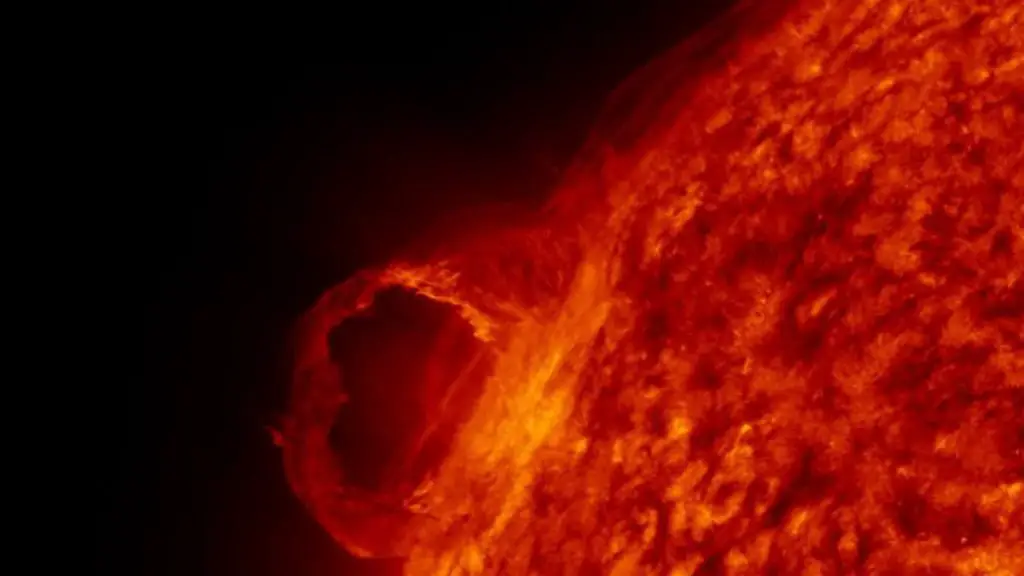
The heliosphere is a “bubble” in the shape of a comet that’s spherical on one side with a long tail on the other, and the heliopause is the outermost edge of this strange sphere. The heliosphere was created through a constant flow of charged particles called solar winds from the sun. In the form of plasma, these materials form a bubble around the solar system, which also acts as a shield from radiation and other cosmic rays. This “bubble” encompasses all the planets up to 123 AU (18 billion km) from the sun before encountering the interstellar medium.
What’s the interstellar medium you might ask? Well, we normally imagine space to be a complete vacuum that’s void of any matter at all, but it’s not as empty as you might think. The interstellar medium fills up all the space between the star systems! This includes interstellar gases (99%) and dust in the form of hydrogen, helium, and particles of carbon, silicates, and ice, etc.
Without considering for travel into the interstellar medium, our deep space journey would only extend from our home on Earth to the heliopause. Meaning it would only include the exploration of the planets within our solar system.
What are our current plans for deep space travel?
Let’s take a look at what NASA has planned for our solar system.
With the creation of a Deep Space Gateway on the moon, we would no longer have to launch our spacecrafts from Earth, but assemble them in space. This allows us to decrease launch cost, lift the limitations on the size, volume, and design of the spacecraft and its payload capacity.
Types of Space Exploration
We have been striving for two types of space exploration since Sputnik 1 began orbiting Earth in 1957.
Robotic Space Flight
The use of robotics ultimately lowered the cost and risk that was associated with the exploration of space. The probes, satellites, landers, and rover were designed to take and measure scientific research data at locations where crewed flights currently can’t reach. This includes planets that are either too far or has hostile conditions that make it simply inaccessible, such as Venus, Saturn, Uranus, etc.
Some famous robotic explorers you might have heard of include the Voyager 1 and 2, the Mars Curiosity Rover, and China’s Chang’e 5 that recently collected and returned lunar samples back to Earth.
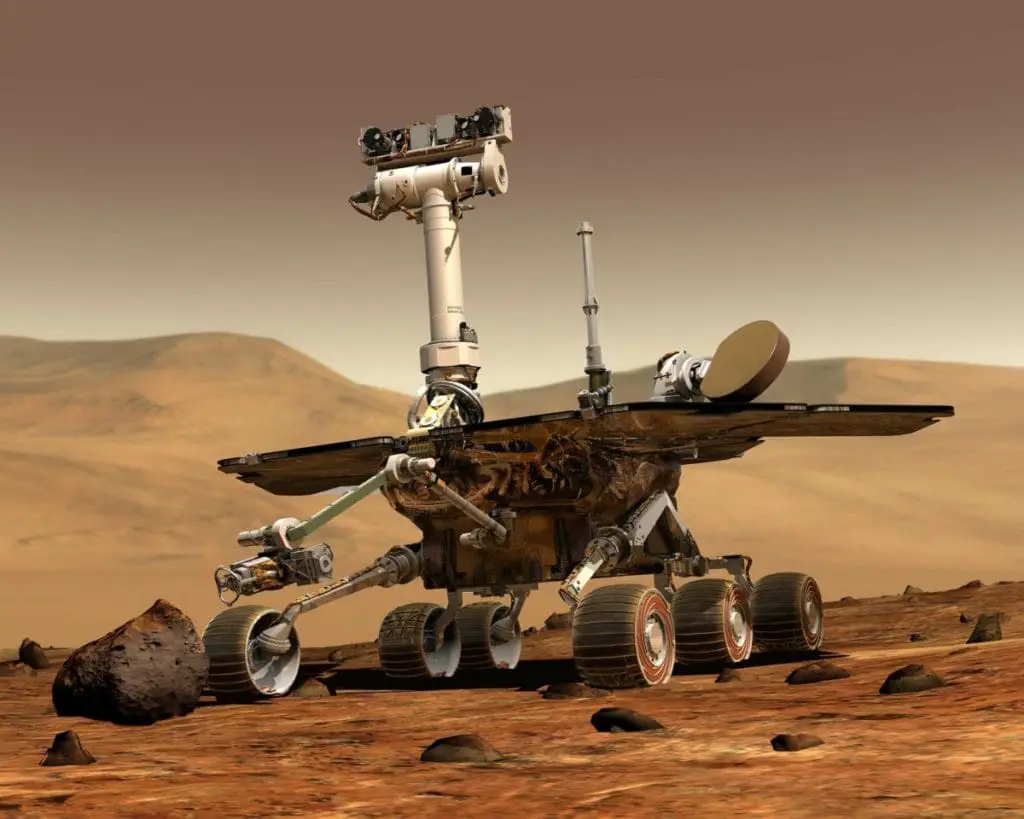
Human Space Flight
Human space flight, or otherwise known as deep-space astronautics unfortunately has advanced rather slowly despite our success in robotics. It has been more than 4 decades since a crewed flight has reached a distance further than NASA’s Apollo 13 mission, which in April 1970 circled around the far side of the moon at an altitude of 254 km and 400,141 km from Earth.
So here comes the question… What do we need to go further?
Deep Space Engine Technology
With our current technology, it would take a crewed flight 6-9 months to get to Mars, and that’s not considering the amount of cargo needed a crew would need to survive on Mars and for the return trip. Understandably, the faster we can arrive at our destination planet, the less cargo we have to bring, and the less our astronauts have to undergo the negative physiological changes associated with prolonged spaceflights, such as muscle atrophy and bone loss.
Antimatter Engines
An important concept to understand is that antimatter is not the opposite of matter. If they were indeed the “opposite” of each other, then their collision/annihilation would produce no product, as their energies would have canceled each other out. But in fact, we know this to not be true as the collision of an electron and its antiparticle – the positron actually releases energy in the form of gamma rays.
One of the biggest obstacles in the way of effectively utilizing an antimatter engine is that we don’t have a lot of antimatter! Scientists have not been successful in harvesting antimatter from space, and we only have the technology to produce antimatter in miniscule amounts (nanograms worth), which is available at only two locations on Earth – Fermilab’s Tevatron Particle Accelerator and CERN’s Large Hadron Collider.
Warp Drives
Warp drives are currently still a theoretical existence that requires exotic materials for the expansion of the space-time continuum. You can read more about it in the Essential Guide to Warp Drives.
Antimatter is currently in consideration as a candidate for this exotic material. Experiments are being conducted at CERN to understand how antimatter interacts with gravity. If antimatter is found to be repelled by gravity, it then becomes a valid source to power the expansion of the warp field through the warp drive.
Pure Antimatter Rocket
This antimatter engine uses the direct reaction product during the annihilation of proton and its antiparticle – the antiproton (scientists finally ran out of names).
This collision releases charged and uncharged pions which can be channeled to produce thrust. Although, this type of engine is not entirely efficient as uncharged pions cannot be deflected for thrust, and the other reaction products such as neutrinos and gamma rays become lost without harvesting.
Thermal Antimatter Rocket
The heat released from the annihilation of matter and antimatter particles is harvested as energy in this engine. During this process, a solid engine core is heated, and a non-exotic propellant is pumped into this core to be expanded and thrust through a nozzle.
Different particles and materials have been suggested for use as the engine core, but they have all been considered impractical due to their limited specific impulse. Specific impulse can be understood as a measure of how effectively an engine can use its propellant to perform maneuvers, such as gaining altitude and velocity.
Nuclear Power Engines
Generally known as a Nuclear Thermal Engine, where “thermal” comes from the energy or heat released from a nuclear reaction, this engine generates thrust through heating liquid hydrogen in a nuclear reactor, which is then expanded through a nozzle.
Many nuclear fuel types have been suggested – Solid cores made of uranium, liquid cores made using fissionable elements in a liquid state, or gas cores made using the rapid circulation of liquid elements to create pockets of gaseous uranium fuel.

Unfortunately, similar to the thermal antimatter engine, the nuclear thermal engine also suffers from inefficiencies to produce a practical amount of specific impulse. Not only that, but nuclear engines are also at high risk for spreading radioactive material in an unpredictable manner if it were not designed and built to standard.
Beamed Propulsion Engine
Beam propulsion is a direct energy propulsion system that provides thrust to a spacecraft from Earth. Beam propulsion is currently the best candidate for a practical deep space engine as it removes the process of energy creation from the spacecraft (ex. compared to the use of a nuclear reactor). This in turn saves a significant amount of mass and increases the efficiency at which we can utilize the propellant onboard, or even forego the need for propellant altogether.
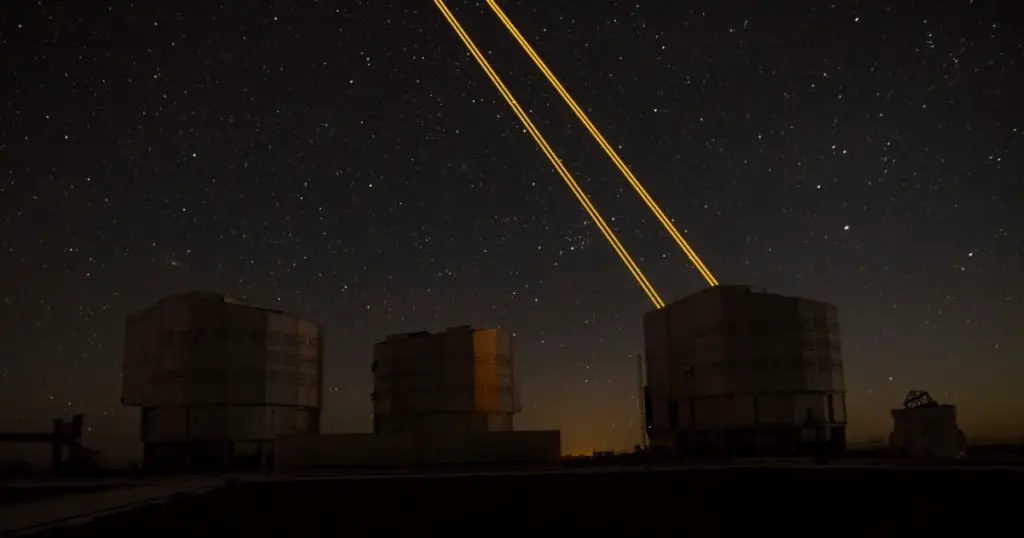
Many types of beamed propulsion methods have been suggested:
Laser Thermal
A laser in this regard can heat propellant onboard to extremely high temperatures, which enables the conversion of liquid propellants to a hot gas that’s exhausted to produce thrust. A similar thermal propulsion concept has also been proposed by Kevin L. Parkin in 2001 at Caltech that utilizes microwaves in replacement of lasers.
Laser Electric
This propulsion mechanism utilizes photovoltaic cells to convert the energy from a laser beam into electricity, which can then be used to power an electric propulsion thruster (ex. ion thrusters).
Laser Pushed Lightsail
Similar to a solar sail which utilizes the radiation pressure from the sun for propulsion, lightsails are propulsed through a laser beam. This system provides the most efficient use of energy out of all proposed engines, as the spacecraft has no need for an energy nor propellant source, which helps it overcome the limitation of the Tsiolkovsky Rocket Equation.
The proposed propulsion method by Breakthrough Starshot Project also utilize a similar mechanism, which uses a ground-based light beam to push lightsails attached to miniature space probes.
Unfortunately, the limitations to this system lie with our current lack of technology to construct a Gigawatt capable laser that is capable of providing enough pressure for deep space travel.
Entry, Descent, Landing Technology
Having a deep space capable engine is nice and all, but what would it matter if we can’t land safely at our destination planet. The technology we have to develop for entry, descent, and landing help ensure precise and safe arrival no matter the type of environment and planetary surface we may encounter.
NASA SPLICE Project
As part of the Space Technology Mission Directorate’s Game Changing Development Program, the SPLICE project is also known as the “Safe and Precise Landing – Integrated Capabilities Evolution“.
This project includes four subsystems:
Terrain Relative Navigation – This subsystem uses algorithms paired with satellite images, known landmarks, and real-time pictures to navigate and arrive safely at the pinpointed landing site.
Navigation Doppler Lidar – A three laser system is used which can bounce off planetary surfaces to help relay environmental conditions back to the spacecraft. This information is used mainly to control for velocity and range measurements.
Descent and Landing Computer – This onboard computer manages the individual components of SPLICE and processes its seamless integration with other systems of the spacecraft.
Hazard Detection Lidar – In principle, this lidar system works similarly to the navigation doppler lidar, except, as the name would suggest, relays information regarding environmental hazards.
Space Radiation Protection
Although the heliosphere has shielded us from most unknown interstellar radiation, it doesn’t mean we are completely safe. In fact, our own sun releases energetic particles during solar storms that propagate dangerous amounts of solar radiation. As such, technology and equipment have to be improved and developed to help our astronauts reduce their risk of space radiation.
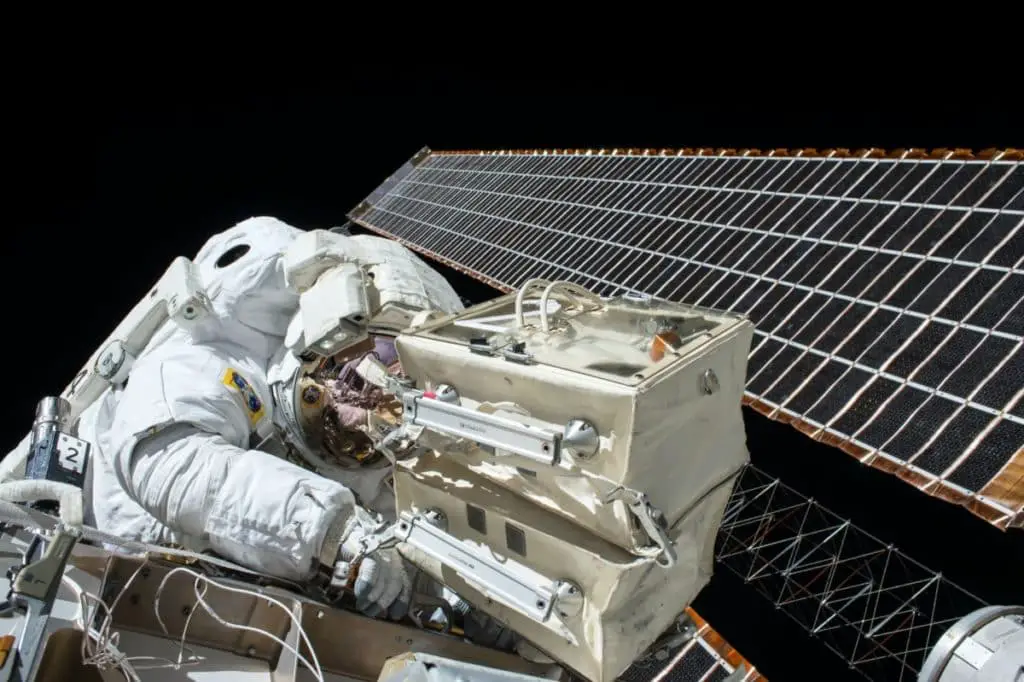
This not only includes equipment and sensors to protect the spacecraft and its crew, but we also have to improve our ability to predict space weather events that might increase the rate of radiation exposure.
The best shielding agent we are capable of using and currently being used aboard the ISS are hydrogen-rich polyethylene, as hydrogen atoms are very effective at absorbing and dispersing radiation.
The longer we can allow our astronauts to stay in space with minimal risk (ex. against cancer or death), the more we can accomplish with our limited time in such a destitute environment.
Mission Environment Integration
After a safe landing, the success of exploration on distant planets and asteroids rely heavily on being ready for the different type of environments we may encounter. This might include the use of appropriate technology, tools, and techniques, as well undergoing effective training in an immersive environment back on Earth.
Here are some things we have done to help our astronauts prepare for their journey into space:
NEEMO – This NASA mission sends astronauts, engineers, and scientists alike to an undersea research station named Aquarius. The participants generally stay for three weeks at a time in this habitat to prepare for a comparable environment in space.
HERA – This is a three story habitat that is designed to allow a crew to become accustomed for isolation, confinement and remote conditions in exploration scenarios.
Simulations and Virtual Reality – Facilities have been designed and developed to provide high-fidelity and real time simulations to support the analysis and training needs for a given environment.

